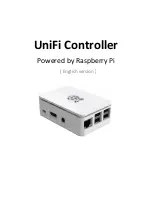
Force arming
When a user with the appropriate alarm group arms an area, the check for
unsealed inputs is ignored. If there are unsealed inputs when the arming
procedure is started, the system still arms (the unsealed inputs might cause an
alarm).
Prevent forced arming
This setting controls the treatment of unsealed inputs during the disarming
procedure and may be used if there are access alarm input types such as type 1
or type 11 in the system. If enabled, the area cannot be disarmed if there are
unsealed inputs.
No arming if category not timing
This option prevents the area from being automatically rearmed without a user
category. For example, a guard might have a user category that automatically re-
arms an area when the user category timer expires. But if someone else
disarmed the area (the user
category timer isn’t running), then the guard’s user
category will not automatically re-arm the area. If enabled, automatic re-arming is
prevented when an area is occupied by non-user category staff.
Disable auto deisolate
Select this option to prevent certain users (for example, cleaners) from being
able to automatically deisolate inputs in the area they disarm. If enabled, a user
the appropriate alarm group can disarm areas with isolated inputs remaining
isolated even if the system is programmed (via the Challenger
Plus
panel’s
“Automatic deisolate” system option) to automatically deisolate (sealed) isolated
inputs. Refer to the
ChallengerPlus Programming Manual
for details of automatic
deisolate.
Enable area search
When enabled, a user with the appropriate alarm group must perform an area
search as part of the disarming process during the time zone specified in the
Challenger
Plus
panel’s “Area search time zone” system option. Refer to the
ChallengerPlus Programming Manual
for details of area search.
User category 1 to 8
User categories assigned to an alarm control level provide timing functionality via
a corresponding user category time. Refer to the
ChallengerPlus Programming
Manual
for more information on user categories.
If multiple user categories are assigned to an alarm control level, then the lowest
user category number applies. System functionality can depend on the alarm
group assigned to a user, and the alarm control levels assigned to a door. In
these cases, the lowest common user category number applies.
For example, if a user has an alarm group containing user categories 3 and 4,
and a door has an alarm control level containing user categories 1, 2, 3, and 4,
then only user category 3 would apply to that user at that door.
Содержание TS1066
Страница 1: ...TS1066 Network Access Controller Programming Manual P N MAPROG TS1066 REV 1 6 ISS 16AUG19 ...
Страница 4: ...ii TS1066 Network Access Controller Programming Manual APPENDIX B Enclosure Access Restrictions 106 ...
Страница 6: ......
Страница 36: ...See Status and control section for more details depending on the operating mode of NAC ...
















































